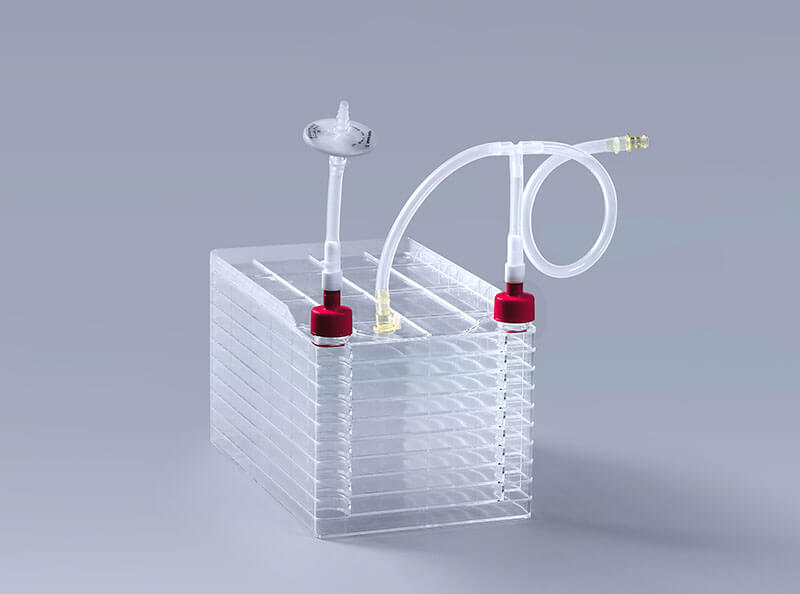In the field of biomedicine, cell culture is a key technology that is widely used in research fields such as drug development, biological product production, and tissue engineering. However, traditional cell culture methods often face limitations such as low space utilization and high risk of cell contamination. As a commonly used container for large-scale cell culture, cell factory can avoid the above problems very well.
The cell factory is a multi-layered cell culture container. Common specifications include 1 layer, 2 layers, 5 layers, 10 layers, 40 layers, etc. to meet the needs of cell culture of different scales. This design enables the maximum utilization of the culture surface in a limited space, thereby saving factory space and improving space utilization.
On the other hand, this cell culture container can also achieve sealed transfer of liquid with the help of a matching piping system. This design ensures the stability and sterility of the cell growth environment and reduces the risk of exogenous cell contamination caused by liquid transfer. Researchers can focus more on the experiment itself without having to worry about contamination issues that arise during cell culture.
In summary, cell factory, as an innovative cell culture solution, not only saves time and resources, but also improves the reliability and reproducibility of experiments. At the same time, the sealed transfer of liquid through the pipeline system can reduce the risk of contamination caused by human errors and improve the safety of experiments. It is an efficient cell culture container.
The FAI climbed 5.9 percent year-on-year in the first 11 months of 2018, quickening from the 5.7-percent growth in Jan-Oct, the National Bureau of Statistics (NBS) said Friday in an online statement.
The key indicator of investment, dubbed a major growth driver, hit the bottom in August and has since started to rebound steadily.
In the face of emerging economic challenges home and abroad, China has stepped up efforts to stabilize investment, in particular rolling out measures to motivate private investors and channel funds into infrastructure.
Friday's data showed private investment, accounting for more than 60 percent of the total FAI, expanded by a brisk 8.7 percent.
NBS spokesperson Mao Shengyong said funds into weak economic links registered rapid increases as investment in environmental protection and agriculture jumped 42 percent and 12.5 percent respectively, much faster than the average.
In breakdown, investment in high-tech and equipment manufacturing remained vigorous with 16.1-percent and 11.6-percent increases respectively in the first 11 months. Infrastructure investment gained 3.7 percent, staying flat. Investment in property development rose 9.7 percent, also unchanged.
 English
English



















































